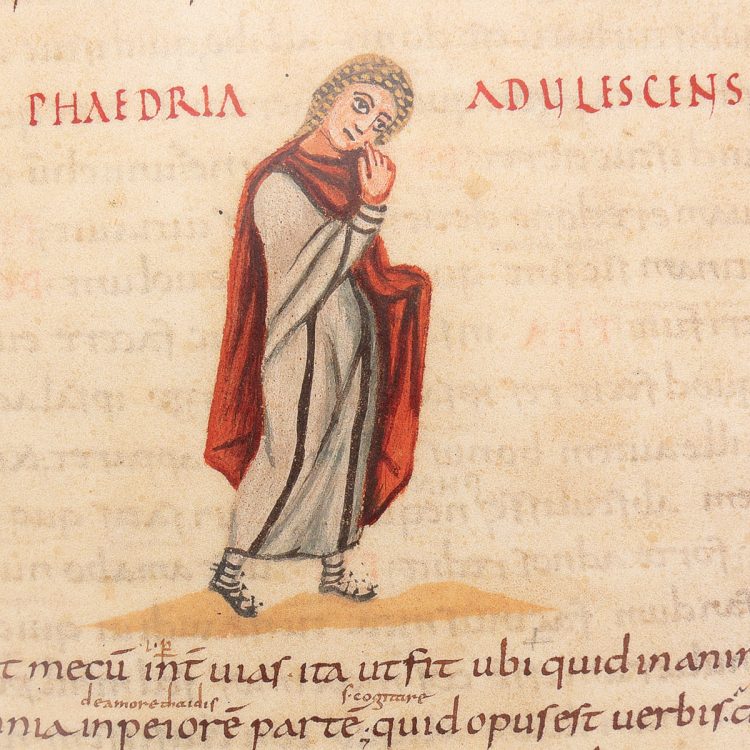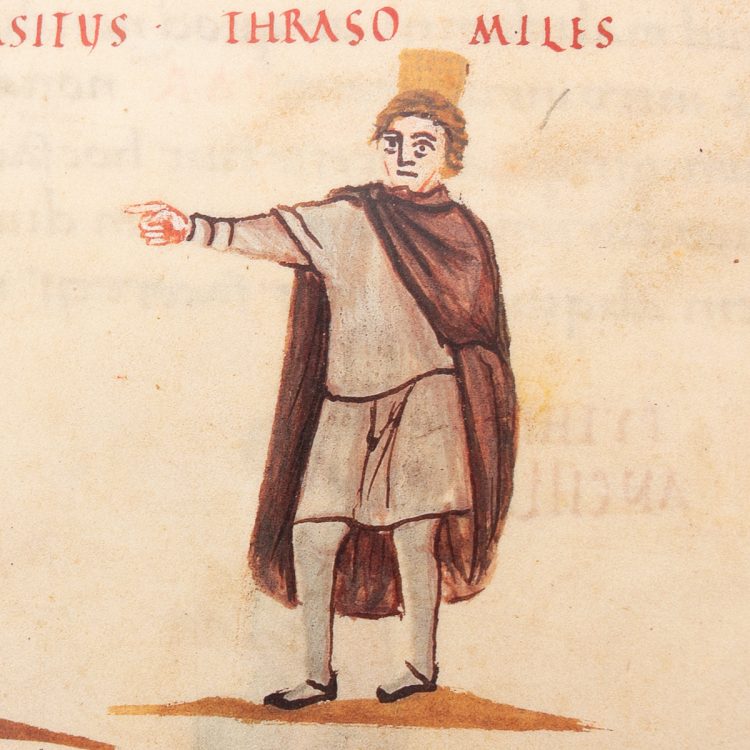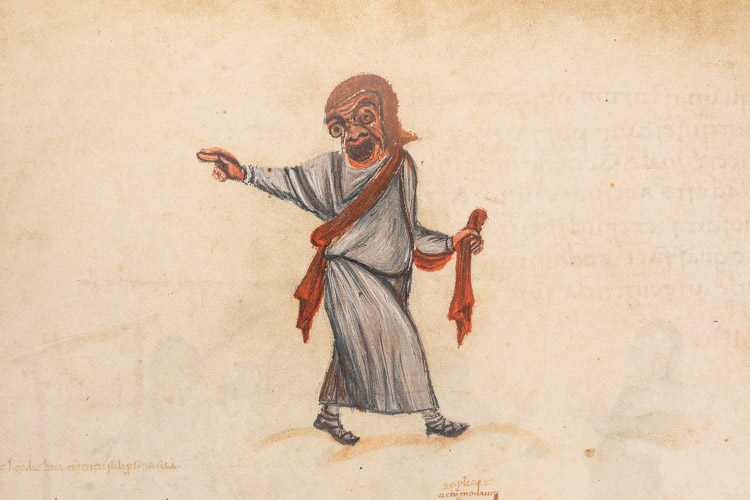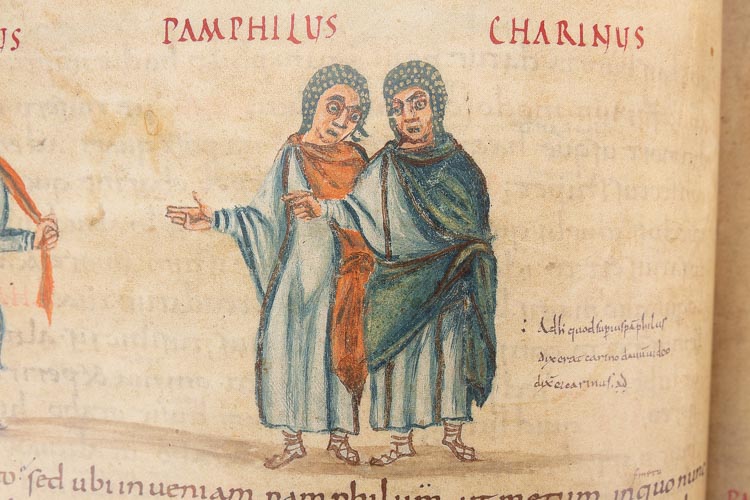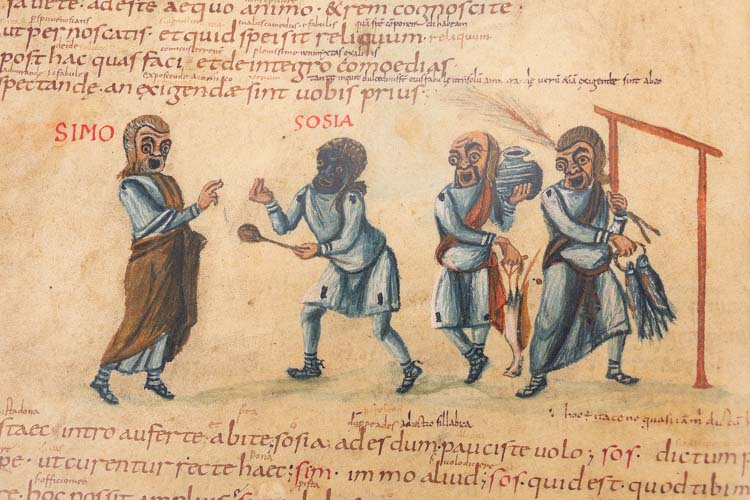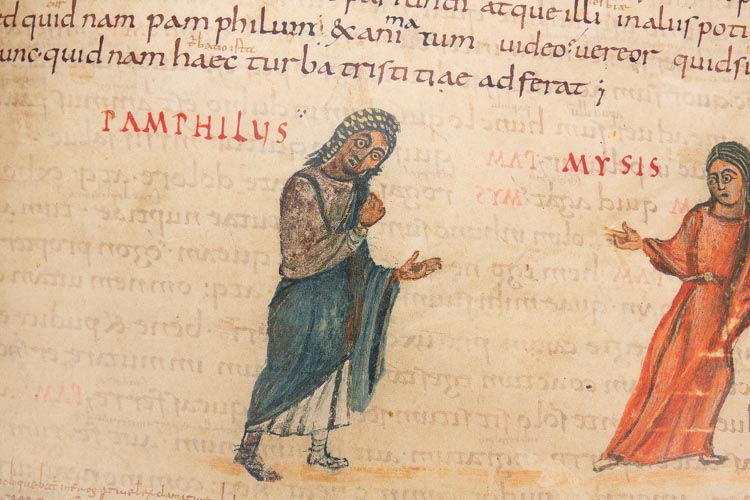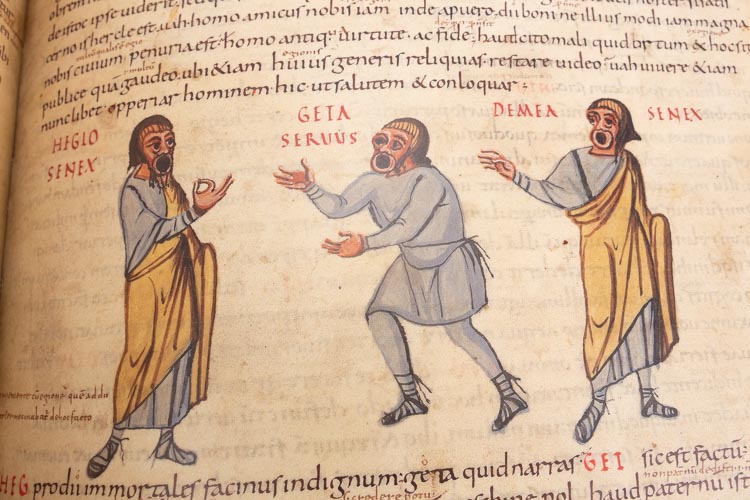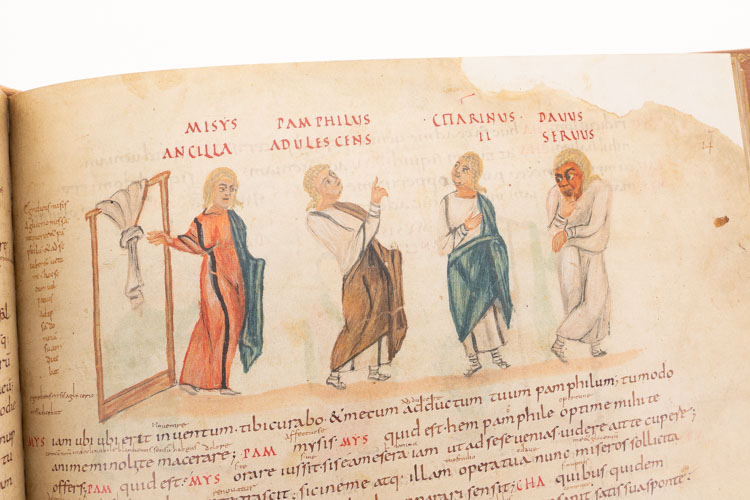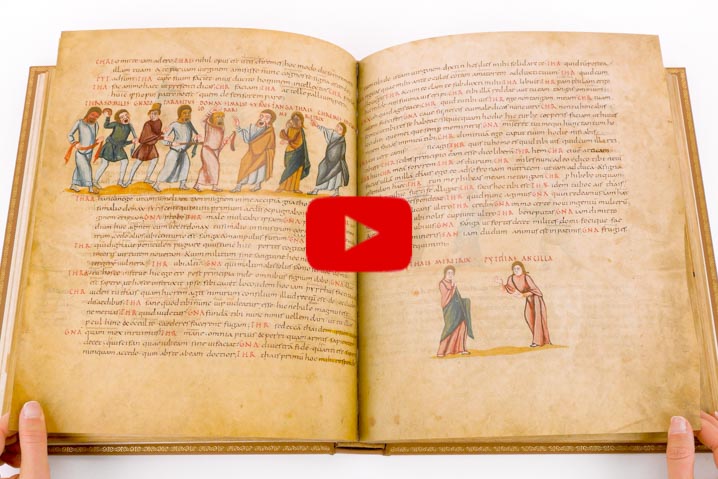The miniatures of the Vatican Terence (ca. 825, Aachen), even if painted centuries after the performances portrayed, provide an insight into both late Roman art and the conventions of ancient drama and society. Let’s meet the Masks of the Roman Stage!
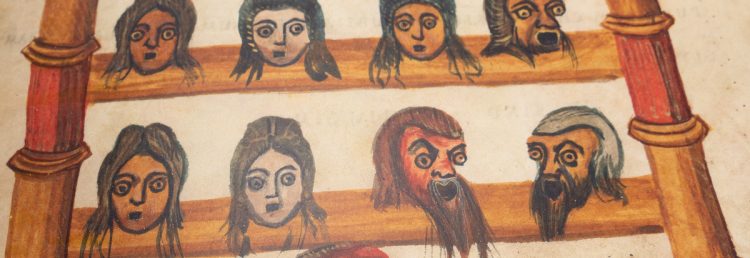
The Vatican Terence (Vatican City, Biblioteca Apostolica Vaticana, Vat. lat. 3868) is an extensively illustrated Carolingian manuscript of the six comedies of the ancient Roman playwright Terence.
It was probably created at the court of the emperor Louis the Pious around 825. The Vatican Terence was unquestionably copied from a late antique illustrated manuscript of the plays, which has been lost to posterity.
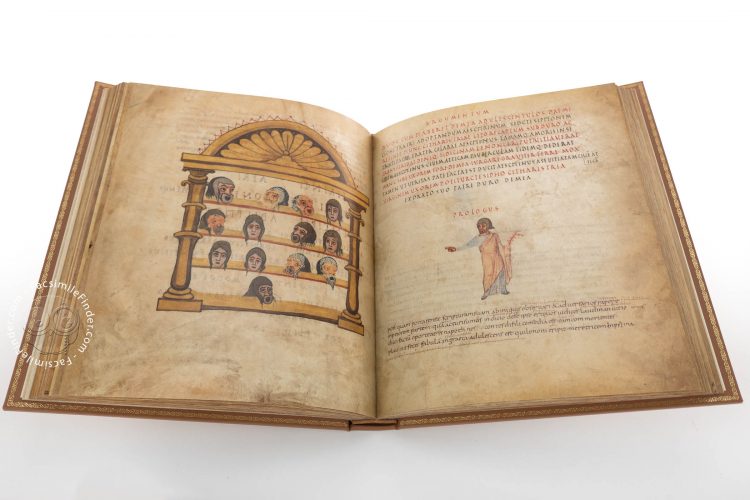
Although the late antique manuscript that provided the model for the Vatican Terence was made centuries after Terence’s comedies ceased to be performed on stage, the miniatures reflected the conventions of Roman drama and dress, and these were copied by the Carolingian artists of the Vatican codex.
The masks and dress of the depicted actors indicate the social status, gender, and age of the dramatis personae, whether citizens, freedmen, slaves, soldiers, or eunuchs; men or women; young or old.
Dorias, a young maidservant
Dorias in the play “Eunuchus” is a young maidservant. She wears a floor-length red robe with black edging at the seams and hems, which is tied at the waist with what appears to be a thin leather belt.
With arms outstretched, perhaps invoking the gods as she proclaims her monologue, she has exposed some of her lower arms. She wears closed-toe shoes, as do all the female characters.

Phaedria from Athens
The youth Phaedria, a citizen of Athens in the same play, wears the customary ankle-length tunic, pallium, striped leggings, and sandals of his station.
The pallium is an overgarment composed of a rectangle of cloth worn over the left shoulder, leaving the right arm and hand free, in this case, to be raised to his cheek in a gesture of sadness.
His mask features the long tightly curled hair of a young man.
Parmeno, the slave
The slave Parmeno, a jokester whose antics drive much of the plot of “Eunuchus,” is dressed in a short tunic, and sandals. He is understood to have bare legs.
His belt is a long thin textile called a focale, which also serves as a sort of scarf, having been extended over the shoulder. The mask, featuring ruddy skin and a large mouth, is the characteristic mask for a slave.
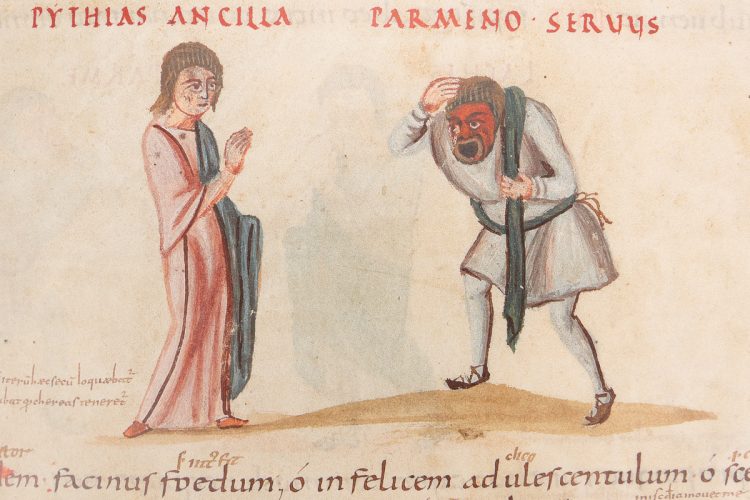
Thraso, the soldier
The soldier Thraso wears a short, belted tunic and a short cape pinned at the left shoulder. He wears closed-toe shoes and is understood to be wearing leggings
His headgear is a corona muralis, which represents a walled city, bestowed on its wearer to honor military service.
His mask features short hair, rather than the long curls of civilian young men.
The Athenian noblemen
The masks of Menedemus and Chremes, two Athenian noblemen in the play “Heauton Timorumenos,” include beards, the usual sign of age in ancient drama and art. They wear ankle-length tunics, palliums, sandals, and striped leggings.
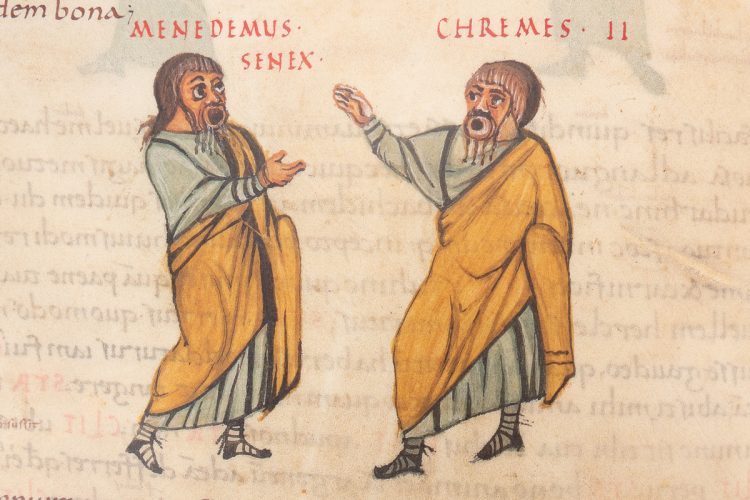
Alas, the artists at the court of Louis the Pious who were responsible for the miniatures in the Vatican Terence were not consistent in their portrayal of either societal types or individual characters. Nevertheless, the miniatures of the Carolingian manuscript, even if painted centuries after the performances portrayed, provide an insight into both late Roman art and the conventions of ancient drama and society.
🎭 The Masks of the Roman Stage 🎭
NEW WEEKLY VIDEO
Find our more about the Vatican Terence (Vatican City, Biblioteca Apostolica Vaticana, Vat.lat.3868) on our website!


